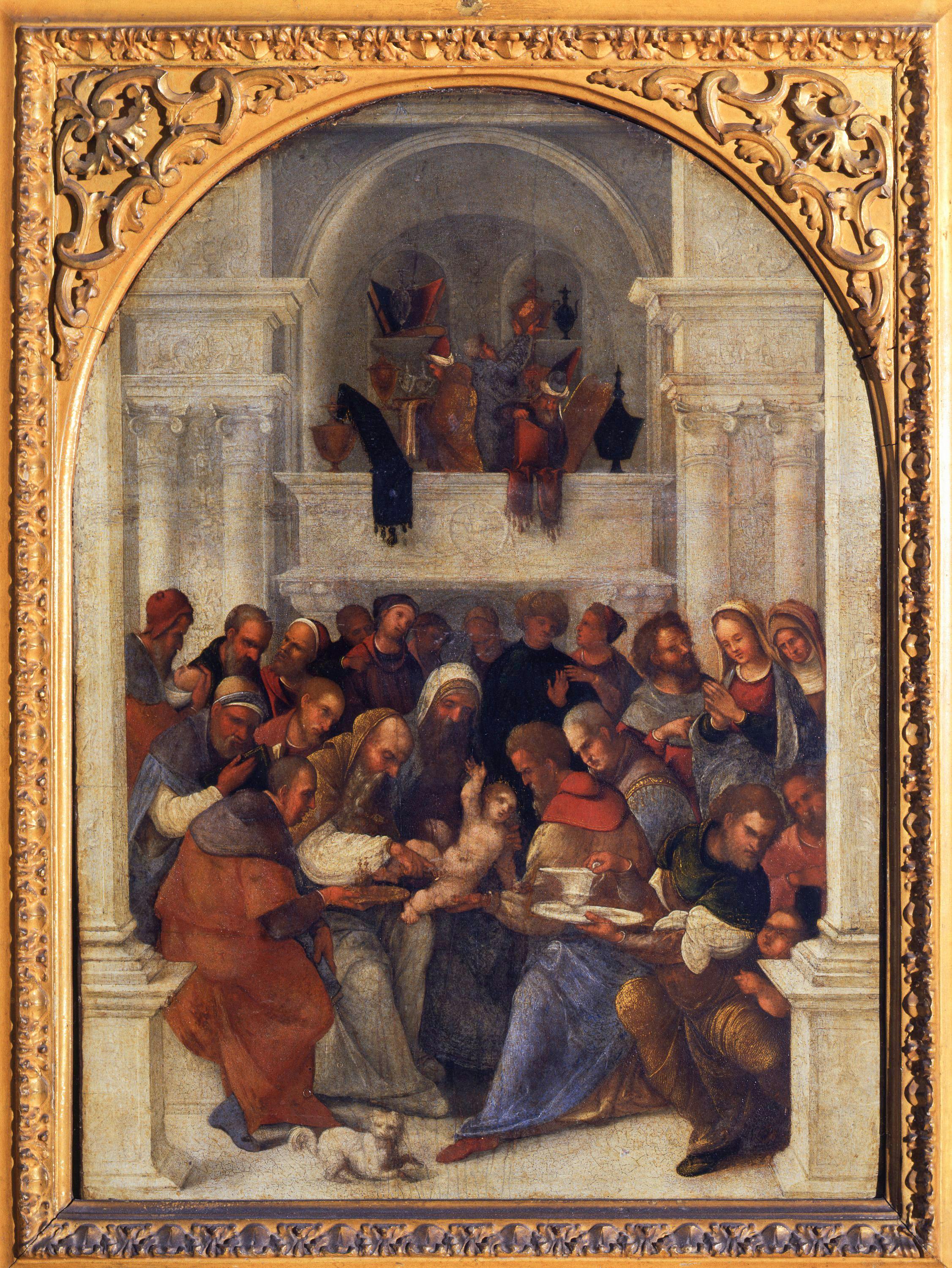Circumcision of Jesus
Ludovico Mazzolino (Ferrara 1480 circa - 1528/1530)
The importance of the architectural and scenic element is constant in Mazzolino's religious painting. In the context of Renaissance Ferrara, it is clear that his works were intended for exponents of a cultured humanism strongly interested in classical antiquities. At the same time, the artist presents a noticeable vocation for caricature painting, which was influenced by German art and close to that of Bolognese painter Amico Aspertini, which gives extreme vivacity to his works. It’s the same for this panel, where the event is witnessed by an excited audience, from which only Mary seems to detach by concentrating on praying. A subject of ancient Abrahamic origin, such as circumcision, aroused particular interest in a city like Ferrara, that was open to Jewish culture and its community and was protected by the House of Este. It is said that few years earlier, in 1498, Jewish scholar Abraham Farissol performed the circumcision ritual in Ferrara in the home of Pellegrino Prisciani, an astrologer and ducal librarian, who acted as witness together with other Christians who were moved by fascination and also by the desire to return to the origins of this ancient rite. The artist wanted to turn each painting into a precious artefact that could be appreciated by the personalities of the Este court; as it already happened with the dukes of Ferrara, they longed for his small panels, refined objects of value that were used to decorate studies and private dressing rooms. After belonging to Cardinal Ippolito d'Este at least since 1525, the work was inherited by his nephew Cardinal Luigi d'Este and then acquired in 1587 by Cardinal Ferdinando de' Medici, who exhibited it in Villa Medici in Rome before succeeding his brother Francesco on the Grand Ducal throne and returning to Florence in the same year, leaving his collection in the Villa on the Pincio hill. In 1796, Mazzolino's small panel was transported to Florence where, from the Ducal Guardaroba, it entered the Uffizi Galleries on 16 August of the same year.
S. Zamboni, Ludovico Mazzolino, Milano 1968, p. 42, n. 25, tav. 53; A. Cecchi, La collezione di quadri di villa Medici, in Villa Medici. Il sogno di un cardinale. Collezioni e artisti di Ferdinando de’ Medici (Roma, Villa Medici, 17 novembre 1999 - 5 marzo 2000), a cura di M. Hochmann, Roma 1999, p. 63; C. Occhipinti, Jacopo Palma il Vecchio: «Ritratti di doe signore antiche». Vicende estensi tra Ferrara, Parigi e Roma (1535-1579), in Studi di Memofonte. Rivista on-line semestrale, 5, 2010, pp. 3-4 (link); G. Fiorenza, Hebrew. Hieroglyphs, and the Secrets of Divine Wisdom in Ludovico Mazzolino's Devotional Paintings, in Visual Cultures of Secrecy in Early Modern Europe, a cura di T. McCall, S. Roberts, G. Fiorenza, Kirksville 2013, p. 133; Circoncisione di Gesù Bambino - Lodovico Mazzolino, Catalogo Generale dei Beni Culturali (link)
